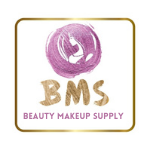Packaging plays a pivotal role in the cosmetic industry. It not only serves as a protective layer for products but also influences consumer perception and brand identity. With a myriad of packaging options available, understanding the pros and cons of each component can help brands make informed decisions. Let’s dive into the various cosmetic packaging components and evaluate their benefits and drawbacks.
1. Glass Containers
Pros:
- Luxury Appeal: Glass exudes a premium feel, making it a popular choice for high-end cosmetics.
- Non-reactive: It doesn’t react with the product, preserving the integrity of the cosmetic.
- Eco-friendly: Glass is recyclable and can be reused, reducing environmental impact.
Cons:
- Fragility: Glass is prone to breaking, which can lead to product loss and potential harm.
- Heaviness: Glass containers are heavier, increasing shipping costs and making them less travel-friendly.
- Cost: Generally, glass packaging is more expensive compared to other materials.
2. Plastic Containers
Pros:
- Versatility: Plastic can be molded into a variety of shapes and sizes, offering design flexibility.
- Durability: It’s less likely to break compared to glass, making it more durable.
- Lightweight: Plastic is lighter, reducing shipping costs and improving portability.
Cons:
- Environmental Impact: Most plastics are not biodegradable, contributing to environmental pollution.
- Chemical Interaction: Some plastics can react with cosmetic ingredients, affecting product stability.
- Perception: Plastic is often perceived as less luxurious compared to glass or metal.
3. Metal Containers
Pros:
- Durability: Metals like aluminum and tin are robust and protect products effectively.
- Aesthetic Appeal: Metal packaging can offer a sleek, modern look, enhancing brand appeal.
- Recyclability: Metals are highly recyclable, making them an eco-friendly option.
Cons:
- Cost: Metal packaging can be more expensive due to material and production costs.
- Weight: Metals are generally heavier than plastic, impacting shipping costs.
- Potential for Rust: Without proper coatings, metals can corrode when exposed to certain environments.
4. Paper and Cardboard
Pros:
- Sustainability: Paper and cardboard are biodegradable and recyclable, making them environmentally friendly.
- Customizability: They can be easily printed on and shaped, offering great branding opportunities.
- Lightweight: These materials are light, reducing shipping costs.
Cons:
- Durability: Paper and cardboard are less durable and can be damaged by moisture or physical impact.
- Limited Protection: They don’t offer the same level of protection as glass or metal, particularly for liquid products.
- Cost Variability: High-quality, sustainable paper options can be expensive.
5. Biodegradable Plastics
Pros:
- Eco-friendly: These plastics break down more easily in the environment, reducing long-term pollution.
- Versatility: Similar to traditional plastics, they can be molded into various forms and designs.
- Consumer Appeal: Growing environmental awareness makes biodegradable options attractive to consumers.
Cons:
- Availability: Biodegradable plastics are not yet as widely available or produced as traditional plastics.
- Cost: Often, they are more expensive to produce, increasing overall packaging costs.
- Performance: They may not always match the durability and longevity of conventional plastics.
6. Acrylic Containers
Pros:
- Aesthetic Appeal: Acrylic has a clear, glass-like appearance, offering a premium look without the fragility.
- Durability: It is more resistant to breakage compared to glass, making it a safer choice.
- Lightweight: Acrylic is lighter than glass, reducing shipping costs and improving portability.
Cons:
- Environmental Impact: Like other plastics, acrylic is not biodegradable and poses environmental concerns.
- Scratching: Acrylic can be prone to scratching, which may affect its appearance over time.
- Cost: Acrylic can be more expensive than other plastics, though generally less so than glass.
Conclusion
Choosing the right packaging component for cosmetics involves balancing functionality, cost, sustainability, and brand image. Glass and metal offer durability and a premium feel but come with higher costs and shipping concerns. Plastic and acrylic provide versatility and cost-effectiveness but pose environmental challenges. Biodegradable options and paper are gaining popularity for their eco-friendliness, though they have their own limitations. Ultimately, the choice depends on the specific needs of the product, the brand's values, and the expectations of the target market. As sustainability continues to be a major focus, innovation in packaging materials is likely to shape the future of the cosmetic industry.

